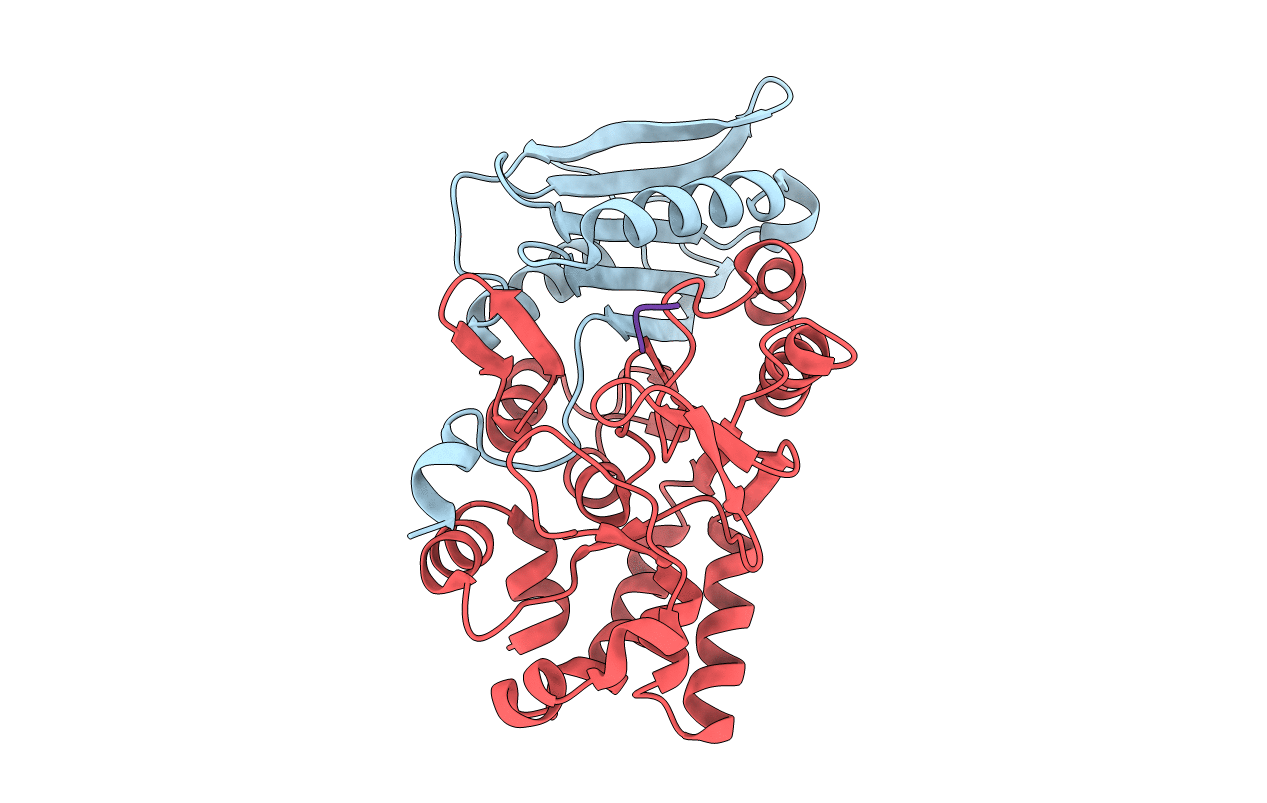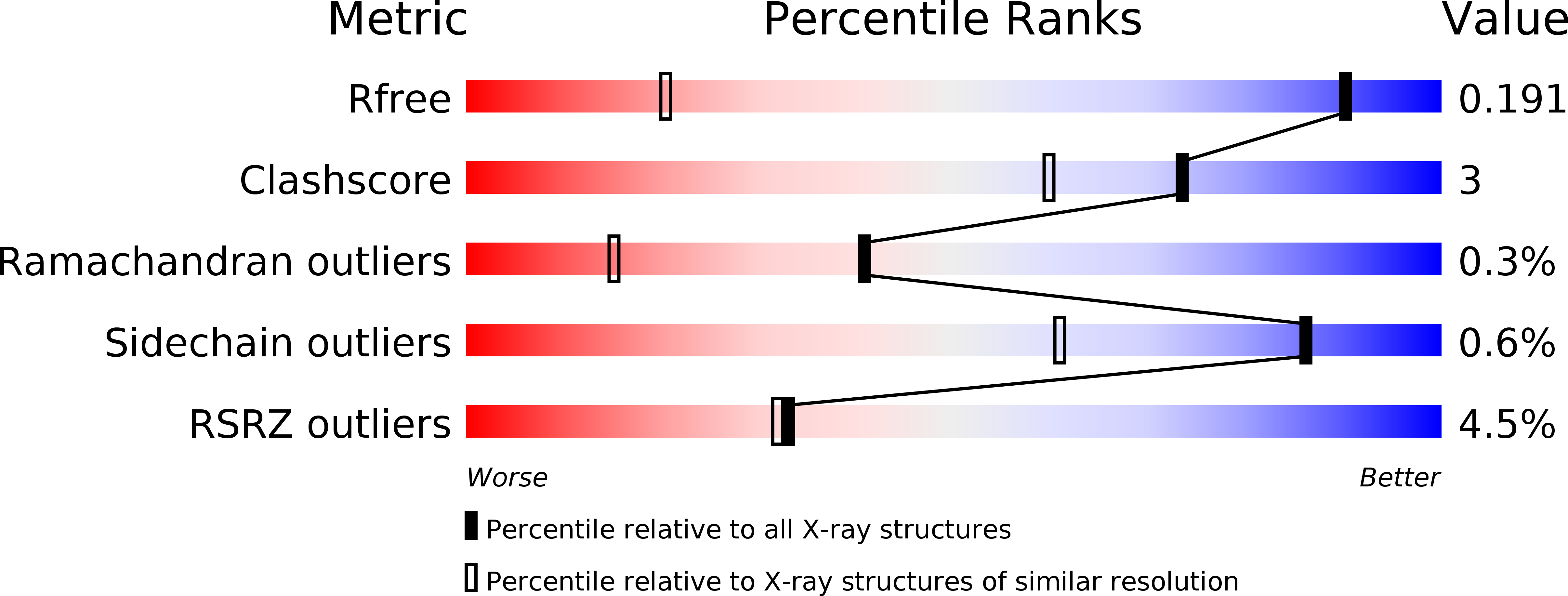
Deposition Date
2015-02-24
Release Date
2016-03-16
Last Version Date
2023-11-15
Entry Detail
PDB ID:
4YEC
Keywords:
Title:
Crystal structure of a clostripain (PARMER_00083) from Parabacteroides merdae ATCC 43184 in complex with peptide inhibitor Ac-VLTK-AOMK
Biological Source:
Source Organism:
Parabacteroides merdae ATCC 43184 (Taxon ID: 411477)
unidentified (Taxon ID: 32644)
unidentified (Taxon ID: 32644)
Host Organism:
Method Details:
Experimental Method:
Resolution:
1.12 Å
R-Value Free:
0.19
R-Value Work:
0.15
R-Value Observed:
0.15
Space Group:
P 1 21 1


